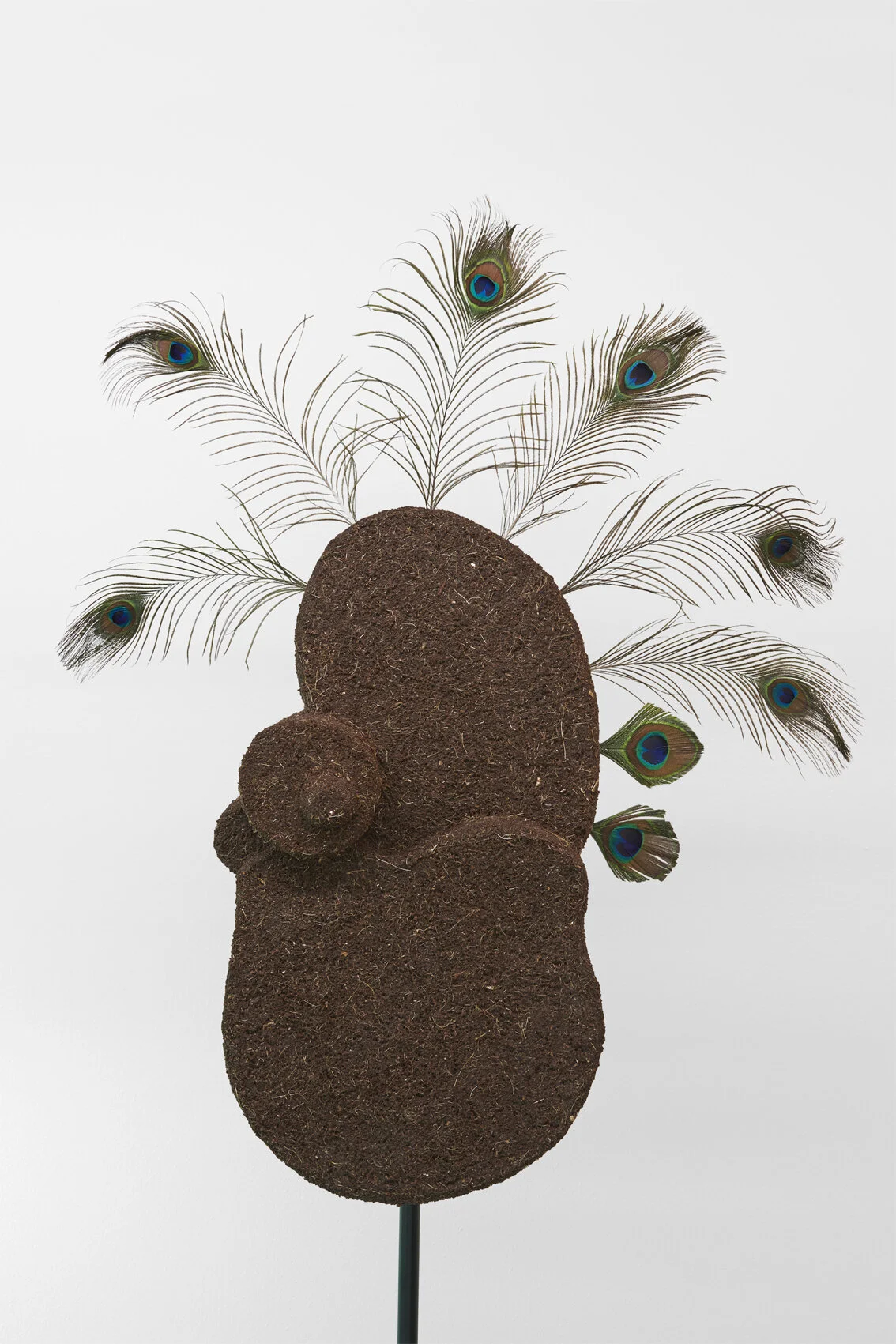Icarus radiolaria and Icarus siphonophore
2019
Coconut coir, peacock feathers, tripod
Coconut coir, perlite, pheasant feathers, metal rod
Ernst Haeckel, Illustration from Report on the Radiolaria collected by H.M.S. Challenger, 1873 - 1876
The Radiolaria, also called Radiozoa, are protozoa of diameter 0.1–0.2 mm that produce intricate mineral skeletons. They are found as zooplankton throughout the global ocean.
The skeletal remains of some types of radiolarians make up a large part of the cover of the ocean floor as siliceous ooze. Due to their rapid change as species and intricate skeletons, radiolarians represent an important diagnostic fossil found from the Cambrian onwards. Ninety percent of radiolarian species are extinct. The skeletons, or tests, of ancient radiolarians are used in geological dating, including for oil exploration and determination of ancient climates.
Ernst Haeckel, Kunstformen der Natur (1904), plate 17: Siphonophorae
Siphonophorae (from Greek siphōn 'tube' + pherein 'to bear') is an order of Hydrozoans, a class of marine organisms belonging to the phylum Cnidaria. Although a siphonophore may appear to be an individual organism, each specimen is in fact a colonial organism composed of zooids that are morphologically and functionally specialized. Zooids are multicellular units that develop from a single fertilized egg and combine to create functional colonies able to reproduce, digest, float, maintain body positioning, and use jet propulsion to move. Most colonies are long, thin, transparent floaters living in the pelagic zone.
There is no fossil record of siphonophores, though they have evolved and adapted for an extensive time period. Their phylum, Cnidaria, is an ancient lineage that dates back to c. 640 million years ago.









